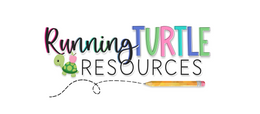
Introducing young students to the concept of elections can be a fun and educational experience that helps them understand the basics of democracy, decision-making, and community participation. As a teacher, you can create meaningful and engaging activities that align with their developmental stage while fostering a sense of responsibility and teamwork. Here are some election-based activities specifically designed for preschool, kindergarten and 1st grade students.

1. Classroom Voting Booth
Activity Overview: Create a simple voting booth in your classroom to give students a hands-on experience of what it feels like to vote. Use a cardboard box or a partition to create a private space where students can cast their votes. For a ballot box, I just cover a box with white paper and attach a Ballot Box sign. Create a hole in the top for students to submit their ballots. (You can also purchase ballot boxes on Amazon if you want to make it extra fancy.)
How to Do It:
- Choose a Topic: Pick a fun topic for the vote, such as selecting the class pet, favorite book, or snack of the day.
- Ballot Creation: Create simple ballots with pictures or symbols to represent the choices, making it easier for young students to understand.
- Voting Process: Allow each student to enter the booth, mark their choice, and place their ballot in a box.
- Count the Votes: Gather the class together to count the votes and announce the winner.
Educational Benefits:
- Teaches the basics of voting and majority rule.
- Encourages decision-making and critical thinking.
- Promotes inclusivity and respect for different opinions.
2. Election-Themed Storytime
Activity Overview: Use story time to introduce students to the concept of elections and leadership through engaging, age-appropriate books.
Book Suggestions:
- Duck for President by Doreen Cronin
- Grace for President by Kelly DiPucchio
- The Election Day by Margaret McNamara
- You can browse more Election & Voting books here.
How to Do It:
- Read one of the selected books aloud to the class.
- After reading, engage students in a discussion about the story. Ask questions like, “What does a leader do?” and “Why is voting important?”
- Create Future Voter Ribbons to help students see themselves as important citizens in the community.
Educational Benefits:
- Enhances listening and comprehension skills.
- Introduces the concept of leadership and responsibility.
- Stimulates discussions about fairness and community roles.
3. Mock Election with Class Roles
Activity Overview: Organize a mock election where students vote for class roles, such as line leader, snack monitor, or classroom helper.
How to Do It:
- Nomination Process: Have students nominate their peers or volunteer for roles.
- Campaigning: Allow students to create simple posters or share why they would be good for the role (with teacher assistance).
- Voting: Conduct a secret ballot vote.
- Role Assignment: Announce the elected students and discuss their new responsibilities.
Educational Benefits:
- Builds self-confidence and public speaking skills.
- Teaches the importance of roles and responsibilities in a community.
- Reinforces the concept of fair elections and democratic participation.
4. Election-Themed Art Projects
Activity Overview: Integrate art by having students create election-themed crafts, such as campaign buttons, flags, or posters.
How to Do It:
- Provide materials like paper, crayons, markers, and stickers.
- Encourage students to create campaign buttons with their favorite candidate (or themselves) or design a class flag.
- Display the art projects around the classroom to build excitement.

Educational Benefits:
- Develops fine motor skills and creativity.
- Encourages self-expression and individuality.
- Reinforces the election theme through visual arts.
5. Decision-Making Circle Time
Activity Overview: During circle time, involve students in group decisions that mimic the election process. For example, let them vote on the next game to play or the story to read.

How to Do It:
- Present two or three options for the group to choose from.
- Allow each student to cast their vote by raising their hand or placing a token in a jar.
- Discuss the results and emphasize the importance of participating in group decisions.
Educational Benefits:
- Enhances social skills and group dynamics.
- Teaches the concept of compromise and consensus.
- Reinforces the idea that everyone’s opinion matters.

Election-based activities for kindergarten students are a fantastic way to introduce the principles of democracy in a fun and relatable manner. By engaging in these activities, students not only learn about voting and leadership but also develop critical thinking, social interaction, and decision-making skills. These foundational experiences will help them understand the importance of their voice and the value of participating in their community, both in the classroom and beyond.

P.S. You can find the Election Activities Set here on my site or over on Teachers Pay Teachers.
*This post contains Amazon Affiliate links in which I may earn a small commission from purchases at no additional cost to you.








